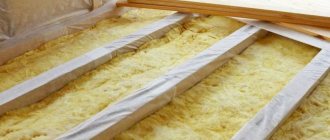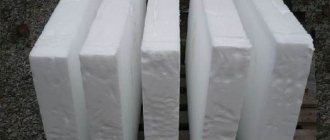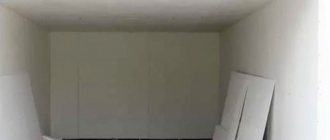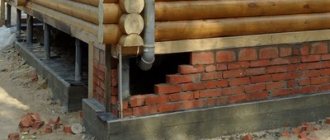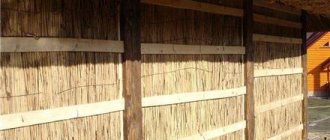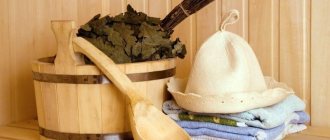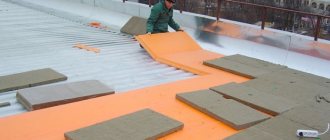DIY production technology
When ready, the consistency of the mixture is similar to a soufflé. The substance hardens when it comes into contact with air. When applied, this mixture fills all voids. Therefore, the noise and thermal insulation characteristics of the room are improved after foaming the roof and other surfaces.
The material is convenient because work with it can be carried out all year round, regardless of weather conditions. Insulating houses with foam insulation gives the same result.
Types of equipment for do-it-yourself penoizol
Any premises can be used to set up production. But significant savings can be achieved if the process is organized in the same place where construction work is taking place.
The following types of devices are expected to be used:
- compressor;
- Electric Energy;
- pumps for solutions;
- foam generators. Their material matters;
- foam supply pumps;
- steam generator.
All equipment can be easily purchased on the construction market or in specialized stores. Including those working remotely via the Internet.
Devices are produced by different manufacturers, the main differences are in price and characteristics. 35 thousand is the average cost of the overall structure.
Russian and Ukrainian installations in this area give the best results. They are aimed at high-quality insulation of walls with foam insulation.
Insulation with liquid foam plastic - penoizol.
The scope of application of urea foam - penozol as insulation is very wide:
— insulation of hollow walls: wooden frame houses, houses made of timber with insulation under the siding, hollow pockets in brickwork;
Video: Insulating the wall of a frame house with liquid foam - penoizol.
— insulation of floors, for example, if the house is on stilts with a ventilated underground;
— insulation of attics;
Video: Filling the floor and attic with liquid foam - penoizol.
- insulation of the attic roof;
— insulation of industrial refrigeration chambers and containers;
— insulation of industrial premises.
Equipment assembly
The components can be purchased online at a more affordable price. Typically, this is done by contacting private sellers who post their messages. Some manufacturing companies also operate according to this implementation scheme. The process technology and drawings are described on thematic portals.
The most inexpensive devices contain the following devices:
- compressors;
- plastic barrels where solutions with catalyst are stored. Minimum volume of 300 liters;
- hose through which the mixture is supplied. Such equipment has only one drawback - unreliability. But it is easy to avoid;
- gas-liquid installation;
- set with taps.
The owners will probably have some parts in stock. But you shouldn’t skimp on the pump; it should be of the highest quality possible. Models that support the so-called double foaming are effective when producing penoizol; you can also make equipment yourself.
A compressor with a certain power is purchased. Such installations are also sold in construction markets and in special equipment stores. The pump should output about 4-5 atmospheres.
Plunger and vortex units will be the optimal choice in most situations. The main thing is to protect them from large particles getting inside, for which additional filters are purchased.
It is better to take a metal pump body, then the service life will be maximum. It is better to find a trusted seller who is not in doubt. Then the insulation of materials will then be of high quality.
Selection criteria and equipment purchase
In most cases, liquid penoizol is chosen when it comes to domestic use. It is applied using special equipment. You can rent it to save money.
To apply penoizol, a special installation is required; it can be rented in order to save
To produce penoizol with your own hands at home, you will need to equip the installation. You can arrange it from scrap materials. You will also need a compressor, molds for finished products, and additional equipment for lighting and ventilation. Budget installation options involve a combination of:
- gas-liquid equipment;
- supply hose;
- set of taps;
- plastic barrels;
- compressor.
Urea resins and catalyst are mixed in the plant. They are placed there using a pump. There is compressed air here. The main attention should be paid to the purchase of a pump, since it plays the role of a key element in production. Errors in dosage are especially important. A vortex or plunger pump is the most profitable and effective option. But in any case, foreign particles should not be allowed to get inside, as this will ruin the whole process.
More information about liquid foam:
Required Ingredients
Penoizol consists of the following components:
- process water;
- foaming agent;
- orthophosphoric acid. This is a hardener that allows the foam to take a certain shape;
- urea-formaldehyde resin.
These components are also obtained in specialized stores, most often in the construction industry. What penoizol is is easy to understand.
Let's give an example of the consumption of basic substances for the production of 1 cubic meter:
- 30-45 ml water;
- 300-1000 ml of curing catalyst;
- 250-500 ml of foaming agent;
- 8-25 kilograms of resin.
It is allowed to change the indicated proportions depending on individual needs and conditions. This is a classic ratio when making liquid foam with your own hands.
During manufacturing, the components are fed into the unit using a special pump. Mixing also takes place internally, using compressed air. Everything foams and turns into thermal insulation material.
Through the mixing hose, the finished product is supplied to where the work is being carried out.
It is recommended to first mix the reaction catalyst with a foaming agent and water in a separate container. The second container is used for resin. Then the mixtures are combined with each other and stirred until a soufflé consistency appears.
This is a manual production method. The resulting mass can be poured into molds of different sizes. Everything freezes at room temperature, then the base is cut into separate sheets. The surface is covered with protective compounds to obtain better performance when insulating with foam insulation.
Price for liquid polystyrene foam - penoizol.
The cost of raw materials for producing liquid foam - with 10th density at 2021 prices does not exceed 1000 rubles, even taking into account delivery.
Per cubic meter of 10-density
required:
15 l. resins*45 rubles/liter = 675 rubles;
0.085 l. phosphoric acid * 120 rub/l = 10.2 rub;
0.170 l. foam concentrate ABSC * 160 rub/l = 27.2 rub.
Total: 712.4 rub/m3
Per cubic meter of 20-density liquid foam
required:
30 l. resins*45 rubles/liter = 1350 rubles;
0.085 l. phosphoric acid * 120 rub/l. = 10.2 rub;
0.170 l. ABSC foam concentrate * 160 rub/l. = 27.2 rub.
Total: 1387.4 rub/m3
Why do we indicate prices for liters and not for kilograms like all suppliers of raw materials? Everything is very simple - it is easier for the pourer of liquid foam plastic - penoizol to operate with volumes - buckets, liters, barrels, than kilograms - to find which you need scales.
One liter of resin contains 1.3 kg. The usual packaging is 200 liter barrels, approximately 260 kg per barrel.
One liter of phosphoric acid contains 1.75 kg. The usual packaging is 20 liter canisters, 35 kg each.
One liter of foaming agent ABSA contains 1.25 kg. The usual packaging is 20 liter canisters, 25 kg each.
Types of penoizol
Might be interesting
Thermal insulation
How to insulate a roof from the inside and not make mistakes?
Thermal insulation
Roofing and drainage: heating rules
Thermal insulation
Insulated Swedish stove: pros and cons
Thermal insulation
Distinctive features and variety of ceiling tiles…
Modern technologies have made it possible to create several types of materials, each of which has its own characteristics and differences. When foaming walls with foam insulation, this is also taken into account.
Liquid
Widely distributed in various spheres of life. A very convenient option due to the fact that it can be prepared directly on construction sites. Helps with repairs, provides protection against heat penetration. To additionally form sound insulation in frame buildings, foam is poured inside a confined space. During repairs, available penoizol helps fill cracks and gaps. It can also insulate.
Granulated
It is also called thermal wool or foam insulation crumbs. Release form: granules with a high degree of elasticity. During manufacturing, the polymer is crushed into fractions, each of which is 15 mm in size.
Compared to the original quantity, the volume of this mixture doubles after such grinding. A good option for those interested in cost-effective installation. Granular penoizol is laid on the floor, and the cavities between the walls are filled with it. The ceiling is easy to process.
Sheet
It involves pouring into a special form, in liquid form. The base is cut on special machines when everything cools down. Or they do everything with their own hands to give the structures the required shape and thickness. Next comes drying with mechanical processing. Insulation of buildings under construction is the main purpose of such materials.
During installation, dowels are used to cover the outer walls. The top of the wall is covered with decorative coverings. Slabs are also laid between the joists on the floor after producing penoizol with your own hands at home.
What will you need to get started?
To get started, you will need a plant for the production of penoizol, which includes several separate elements, such as:
- compressor,
- gas-liquid installation,
- collapsible forms,
- containers for components (for example, plastic barrels)
- and a packing table.
In order to produce and use the material immediately in liquid form, you can get by with a compressor, containers and a gas-liquid installation.
It is quite easy to buy equipment for the production of penoizol; the market offers several different equipment options, both Russian and Ukrainian, many of which have their own technological features that distinguish them from others, and also differ in the degree of automation of the process. You can find drawings for self-assembly on sale. The installation price in this case will be significantly lower.
Premises for the production of penoizol
It’s worth starting with premises whose area does not exceed 100 square meters. This is quite enough to accommodate all the equipment and components inside. Special attention is given to warehouses that are used for storage. Be sure to take care of proper ventilation, because production involves the release of harmful substances.
The workshop must have all communications, including:
- sewerage This is a prerequisite;
- heating;
- water;
- electricity.
Such a workshop can be rented, depending on the region it will cost from 20 to 70 thousand rubles monthly. Production requires minimal costs.
Workshop costs can be avoided if penoizol compositions are created on construction sites. Garages can be used to store equipment. And the workshops will open later, when production is properly adjusted.
Thermal insulation of the façade with foam insulation and cladding with cladding slabs
This method of insulation is used only for exterior decoration of the house. The scheme of work is as follows:
- The number of slabs, galvanized steel profiles or other elements for the entire facade is calculated. A galvanized steel frame is attached to the facade of the building with dowels and screws. That is, it is a metal cladding attached vertically;
- Plates (metal or plastic facing panels) are installed and secured to the frame;
- Holes of 35-40 mm are made in the casing at a distance of about 2 m from each other. Penoizol is poured into them using a pump;
- The holes are filled in a checkerboard pattern from bottom to top.
- After completion of the work, the drilled holes are sealed;
- The façade is being decorated.
Using slabs for facade insulation
Each of the above methods of insulating a house with foam insulation has its own advantages, but they are all united by an unusual insulation with excellent thermal insulation characteristics.
Total launch cost
The cost of the resulting product is the main indicator for any business; the production of penoizol is no exception. In this case, it is necessary to take into account the raw materials and production costs that will be needed to create 1 cubic meter of material. Expenses on electricity and wages for workers are taken into account. Their home may be somewhere else.
If the equipment is loaded at 50%, the final calculations for the business to begin with may look like this:
- 562 rubles – the average cost of 1 cubic meter, which is used to process a wall;
- the average selling price can be up to 800 rubles;
- from 1 cubic meter the manufacturer receives 263 rubles. The difference in types of material is insignificant;
- at half load of the equipment, the production volume will be 20 m3;
- per day profit 4760 rubles. This is an important characteristic;
- you can get about 100 thousand rubles per month;
- The payback period is on average up to 2 weeks. The homemade composition gives approximately the same result.
The main advantage is that you can get by with equipment with small dimensions. You can set up the whole process in literally 1-2 days. This applies to both the production of sheets and the use of the material directly on the construction site when it is liquid.
Modern mixing systems provide additional protection against the penetration of dust and dirt into installations. Even with improper operation, many types of equipment remain operational, and the technical quality parameter does not decrease.
Features and description of the material
The material is a modified foam. Its main characteristics are:
- resistance to fire;
- good thermal insulation characteristics;
- installation by spraying.
Penoizol has good resistance to fire.
It is based on three components. This is orthophosphoric acid, urea resin and a substance with foaming properties. The specified ingredients are mixed in exact proportions and the device is installed. A mixture resembling jelly is formed. It has a white tint. Under the influence of compressed air, it moves outward. She:
- fills any space;
- ensures tightness;
- forms a lush foam after hardening.
Curing requires several steps. After application, the composition sets slowly. This takes approximately 15 minutes. After 3 hours the foam becomes a little hard. But this is not enough for it to fulfill its functions. The material takes its final form after 3 days.
In its finished form, it is not solid, but liquid penoizol that is formed. Some home craftsmen are trying to make it with their own hands, since it has good technical characteristics and is considered easy to manufacture. The material is elastic and easily restores its shape after any mechanical stress. It contains up to 90% air. Outwardly, it resembles expanded polystyrene, but differs from it in its fine cell structure.
The improved properties of penoizol have made it popular in the field of insulation of private houses. It is used in thermal insulation of complex structures, interfloor ceilings and floors.
Is it cheaper to order or do it yourself?
There is no need to buy professional equipment if the production result is used at only 1-2 sites. In this case, you can make the material yourself, or rent equipment. The average cost is 10 thousand rubles.
To achieve profitability, it is important to use as many distribution channels as possible from the very beginning. A convenient option is when purchasing a mobile unit. Thanks to it, it is convenient to work on any objects, in the garage and right at the construction site.
Penoizol is used for vapor barrier of a balcony or loggia
Sometimes the time to reach break-even increases due to the seasonality of some work, which is also taken into account. Just like the original lineup.
List of materials and manufacturing technologies
Penoizol is made from foamed urea resin. Its production is characterized by efficiency, affordable price and speed of work. To make it you will need:
- polymer resin;
- foaming agent;
- hardener;
- specially prepared water.
There are several methods for producing penoizol, according to which sheets and mats are produced. The raw materials are poured directly on the spot where the insulation work is being carried out. If the filling radius of the equipment is large, the material manufacturing process becomes efficient.
You can use gas-liquid units that are easy to use and low in cost. For the production of insulation, installations of the Standard and Pena 2000 types are suitable. The first is characterized by an original dosage system. There is also a second generation system with an increased range.
To produce penoizol you will need a special gas-liquid installation
conclusions
We must separately remember that many companies prefer a non-cash form of payment, which is why the money arrives in the account with some delay.
It is advisable to provide in advance not only for wholesale, but also for retail sales. This will ensure a regular flow of funds. This is a good start for aspiring entrepreneurs.
Even if he is far from construction, he is just looking for his niche. The business is easy to start with minimal investment and has an average payback period.
Advantages and disadvantages of penoizol
Penoizol is a lightweight urea-formaldehyde foam that belongs to a class of organic materials.
It is used both for heat and sound insulation of premises, and for insulation of the soil base.
It has been present on the building materials market not so long ago, and therefore is not as widely known as its analogues.
Let's look at its positive and negative qualities.
Advantages of penoizol:
- As mentioned earlier, it is not only a heat-insulating, but also a noise-absorbing material;
- Penoizol, unlike many insulation materials, is not eaten by rodents ;
- The material is resistant to rotting;
- When exposed to high temperatures, it does not ignite , melt or smoke;
- Is a breathable thermal insulation material;
- Penoizol has a fluid structure and hardens only on the insulated surface when interacting with air. This makes it possible to achieve high-quality insulation of complex wall structures, since it fills even the smallest gaps and cracks;
- There is no limitation on service life;
- Foam insulation thermal insulation can be reinforced. This can be achieved by introducing mineral additives into the base material;
- The price of the material is relatively low.
Flaws:
- Gives high shrinkage;
- Difficulty in carrying out installation work. The use of foam insulation requires certain knowledge and experience in working with the material , since application requires strict adherence to technology.
- When insulating frame structures, it is difficult to predict how such thermal insulation will behave. When hardening, penoizol shrinks, which may result in the appearance of huge voids , which will be difficult to fill.
- The material is fragile, so it must be sheathed with other materials that have greater mechanical strength.
Technical indicators
Compared to traditional insulation, penoizol has many advantages. The main characteristics worthy of attention include:
- Thermal conductivity. The only low figure is 0.041 W/m/K. To ensure good performance, it is enough to lay a layer 10 cm thick.
- Soundproofing. Noise absorption is at a quite decent level. It is approximately 65%.
- Fire resistance. The flammability group to which penoizol belongs is designated G-1. Its flammability category is B-2. This indicates that it will not melt when exposed to fire. When high temperatures are reached, the material will begin to evaporate, without producing toxic substances. Under the condition of an open fire, 10 times less smoke is generated compared to polystyrene foam.
- Resistant to chemical components. The insulation does not react in any way to aggressive environments. This primarily applies to solvents of organic origin.
- Resistance to humidity. Penoizol has the ability to absorb moisture well, but it gives it away with equal success. The characteristics of the material are not affected. It is capable of absorbing up to 1/5 of moisture. Penoizol subsequently evaporates it. To prevent mold from forming on the wall, install a ventilation gap. The heat insulator absorbs approximately 20% of moisture throughout the day.
- Vapor permeability. The insulation in question is hygroscopic, and therefore allows the walls to breathe. Air circulates freely throughout the structure.
Penoizol has good vapor permeability, which allows the walls to breathe.
Other characteristics include biostability. This means that penoizol is not afraid of fungi, pathogenic microflora, and domestic rodents. The material is soft, so it adheres closely to any uneven surfaces. It fills any gaps. With a linear deformation of 9%, the compression strength is 0.5 kg per square centimeter.
They started producing penoizol relatively recently, so we can only talk about its durability. It appeared on the market only 50 years ago. But manufacturers claim that it can last up to 30 years. Environmental friendliness is another advantage, since toxic compounds are not released either during installation or during operation.
Video on how to make a foam generator:
